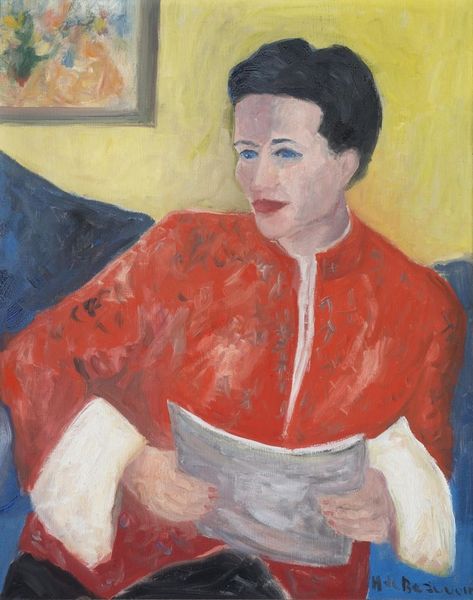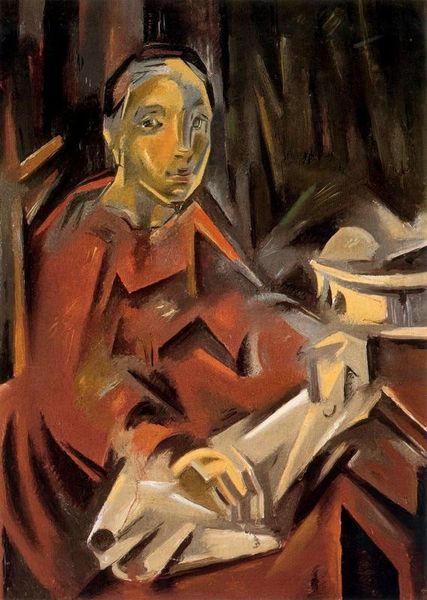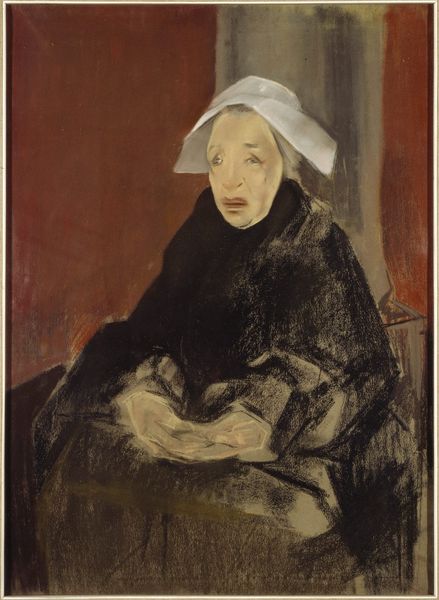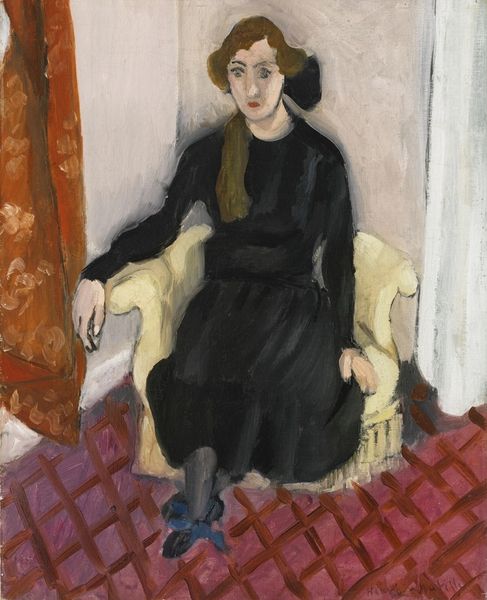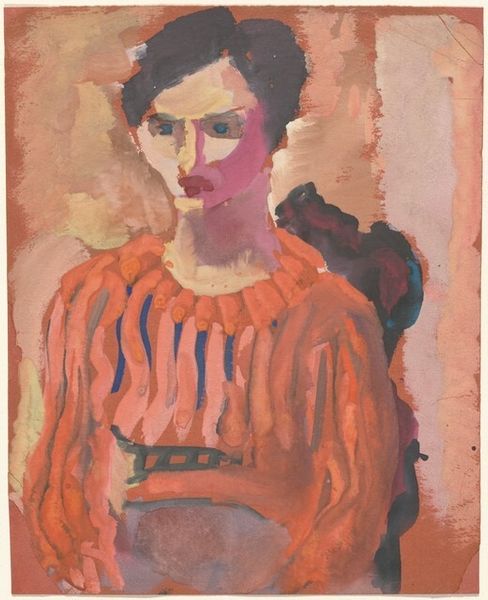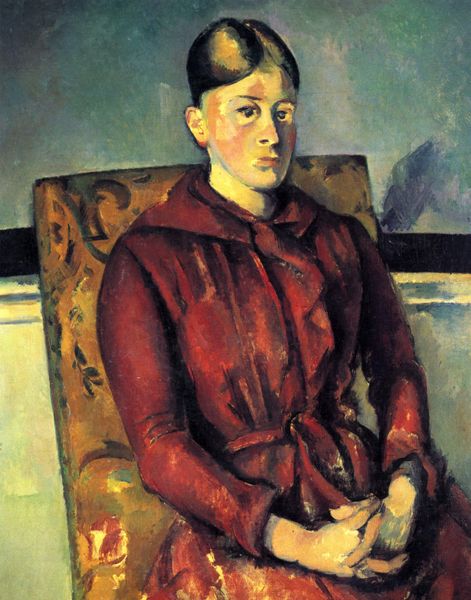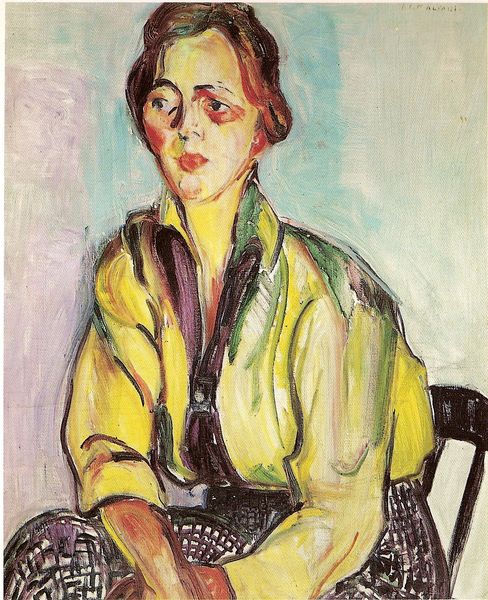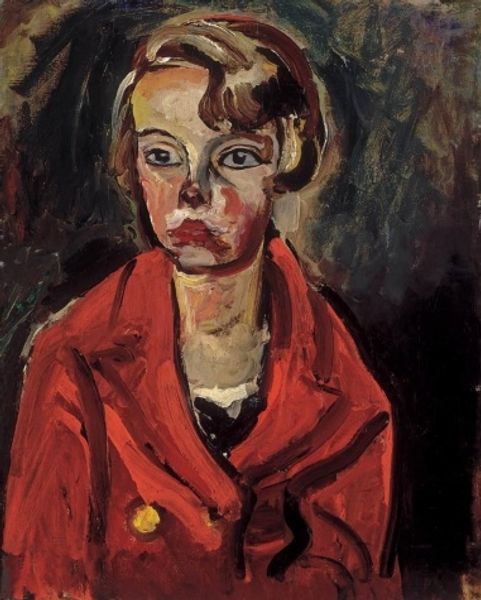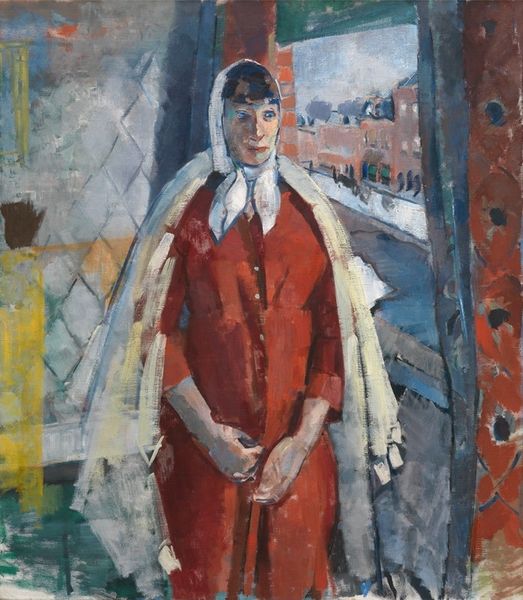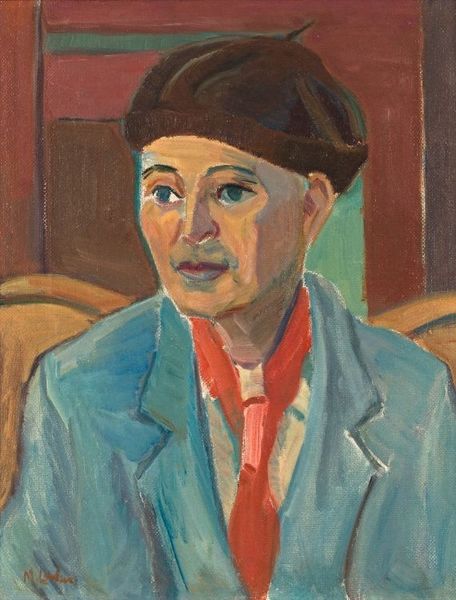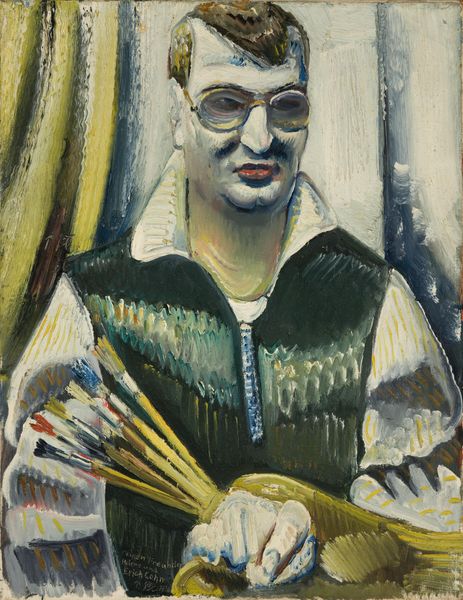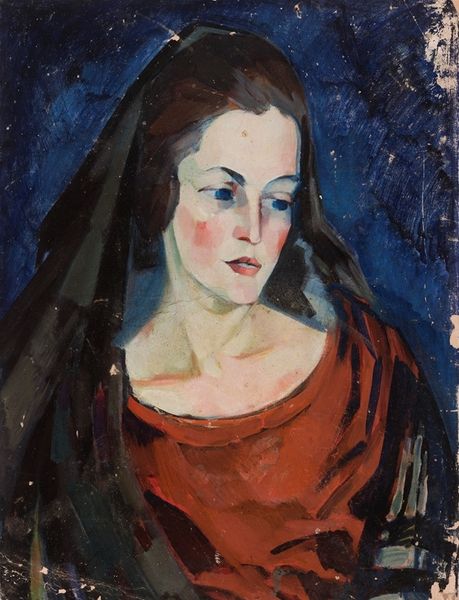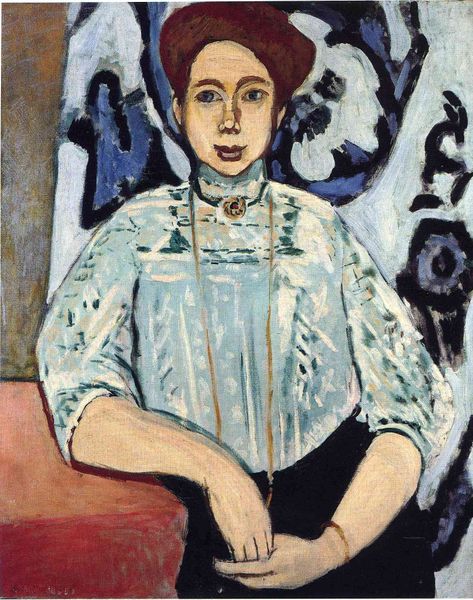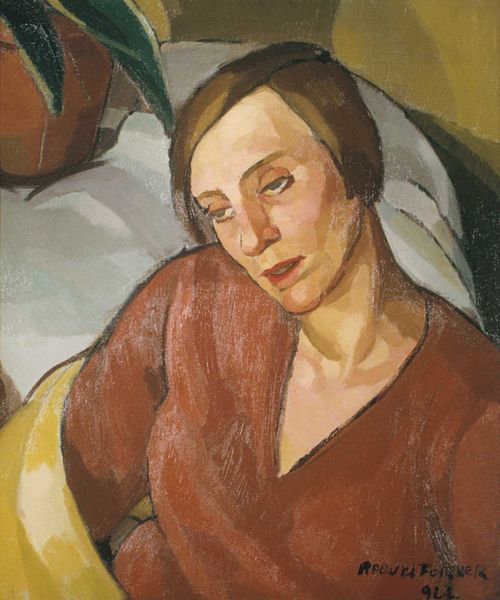
oil-paint
#
portrait
#
oil-paint
#
oil painting
#
expressionism
Copyright: Public domain
Editor: This is María Blanchard's "The Embroiderer," painted in 1926 with oil paint. The subject seems so self-contained, almost isolated, even though the red robe is quite vibrant. What can you tell me about the historical context behind this portrait? Curator: It's interesting you note the sense of isolation. Blanchard painted this during a period of artistic flourishing and social upheaval, the Interwar Period, a time when many artists grappled with expressing both individual and collective experiences of fragmentation. Her work here reflects a broader movement towards depicting the inner self, which coincided with women pushing against traditional roles in the art world and society. Do you see any visual cues that might connect to these shifts? Editor: The intense focus of the subject, the almost austere composition, maybe? It's a portrait of labor, but not in a glorified, romanticized way. Curator: Precisely. It’s worth considering the institutions that were showcasing her art at this time. The rise of museums dedicated to modern art provided a new platform for artists like Blanchard to be seen and taken seriously. She navigated the currents of the avant-garde scene, exhibiting in spaces that championed a departure from traditional academic styles. She was working against societal expectation as a woman artist, so was her expression received differently? Editor: That's a great question! The social constraints definitely would have shaped perceptions of her work. It makes me see the painting in a totally new light. Curator: And, of course, we can consider the painting's current place in the canon, the institutions and collections that have sustained its visibility, as that process informs meaning, as well. Editor: Thinking about the painting's journey through time and how it reflects societal shifts really adds depth. I appreciate the way you've illuminated these aspects of the work.
Comments
No comments
Be the first to comment and join the conversation on the ultimate creative platform.
